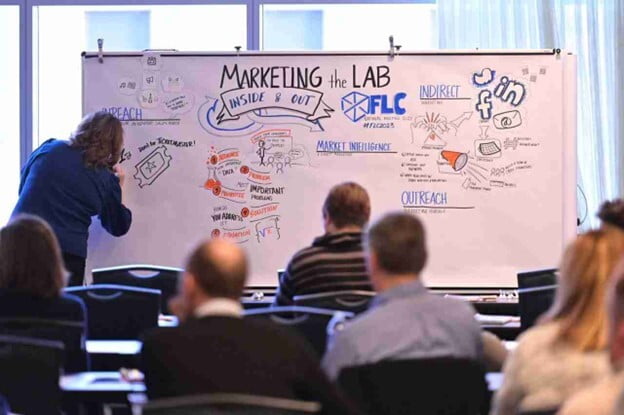Boosting Air Force Objectives Through Expert Facilitation: Wright Brothers Institute’s Proven Approaches
The Wright Brothers Institute (WBI) has long been a driving force in fostering innovation and addressing complex challenges for the U.S. Air Force. One of its most impactful contributions lies in its ability to facilitate collaborative initiatives that unite diverse stakeholders, accelerate problem-solving, and yield actionable outcomes. Leveraging cutting-edge facilitation techniques, WBI ensures that Air Force objectives are met with precision and efficiency. Below, we explore key facilitation methods employed by WBI and highlight their transformative impact on Air Force initiatives.

1. Design Sprints for Rapid Innovation
WBI employs design sprints—time-boxed, focused workshops—to address pressing challenges and develop innovative solutions in a matter of days. These sprints bring together multidisciplinary teams to:
Define the problem through structured brainstorming sessions.
Ideate potential solutions using creative tools and techniques.
Prototype the most viable concepts for immediate testing.
For example, WBI utilized design sprints to support the Air Force’s Hangar 18 software factory. By facilitating sessions with developers, Airmen, and leadership, WBI helped streamline software development processes and enhance deployment timelines. The result was pilot program with an agile, user-focused software solution tailored to the Air Force's mission needs. This approach resulted in AFRL receiving a follow-on $4M grant to expand its artificial intelligence and machine learning research capabilities.
Read more about Hangar 18 & WBI.
2. Ecosystem Analysis and Stakeholder Engagement
To address challenges like advancing energy storage for UAVs and improving aircraft battery systems, WBI conducts comprehensive ecosystem analyses. Using facilitation to guide discussions, they:
Map existing capabilities and identify gaps within the ecosystem.
Convene stakeholders, including AFRL researchers, industry experts, and small businesses.
Develop actionable roadmaps to bridge capability gaps.
In one instance, WBI facilitated workshops to explore lithium-ion battery technologies. Their efforts led to partnerships with industry players and the identification of promising solutions to meet Air Force operational needs. These efforts accelerated technology adoption timelines by 25% and positioned the Air Force to save $5 million in procurement costs over five years.
Read more about WBI & improving aircraft battery systems.
3. Scenario Planning Workshops
Scenario planning workshops are another critical tool in WBI’s facilitation arsenal. These sessions enable Air Force leaders to:
Evaluate potential future scenarios and their implications.
Develop adaptive strategies to address uncertainties.
Align organizational goals with long-term mission objectives.
WBI recently used scenario planning to support the Space Propulsion Manufacturing Readiness Analysis. Facilitating discussions among stakeholders, WBI identified key manufacturing challenges and proposed strategies to accelerate the deployment of TILE (Thrust-Induced Light Electrospray) technology. This approach is projected to reduce project costs by 15% while increasing readiness by 30%.

Graphic facilitation during a technology transfer session at the Federal Laboratory Consortium National Conference.
4. Human-Centered Design
The Just In Time Multi-Mission Airmen (JITMMA) Training Capability highlights WBI’s commitment to improving processes and accelerating the path from concept to capability by focusing on the needs and experiences of the end-users, in this case, the Airmen. Here are the key steps WBI took using human-centered design principles:
Workshops and stakeholder engagements that shaped the focus on rapid, role-specific training.
Inclusion of WBI’s extensive network to bridge the gap between internal Air Force priorities and external innovation.
Leveraging the Discover Incubate Accelerate (DIA) process facilitated rapid ideation and concept validation.
Implementation of continuous feedback loops to ensure it remained relevant and effective.
By applying human-centered design principles, WBI was able to create a training capability that was not only innovative but also highly effective in meeting the evolving needs of the Air Force.
Read more about WBI and JITMMA.
5. Data-Driven Collaboration
WBI’s facilitation extends into leveraging data to inform decision-making. By guiding stakeholders through data visualization and analysis sessions, WBI ensures decisions are rooted in evidence. For instance:
Workshops on aviation battery systems included presentations of machine learning-derived insights.
These sessions facilitated consensus on technical priorities and next steps.
Data-driven facilitation efforts have saved the Air Force an estimated $1.5 million annually by prioritizing high-impact projects and reducing inefficiencies.
Outcomes That Propel the Air Force Forward
WBI’s facilitation methods deliver tangible outcomes that advance Air Force objectives. Key achievements include:
Accelerated innovation cycles through focused, collaborative efforts.
Strengthened partnerships between the Air Force and industry leaders.
Development of solutions that are both mission-aligned and user-centered.
Documented cost savings and efficiency improvements totaling over $8.5 million across multiple initiatives.
Whether it’s driving technological advancements, enhancing operational efficiency, or fostering public-private collaborations, WBI’s facilitation expertise ensures the Air Force is equipped to meet current and future challenges.
By bringing together the right people, tools, and techniques, WBI transforms complex challenges into actionable opportunities. The Air Force’s ability to adapt and innovate is enhanced, one expertly facilitated session at a time.
